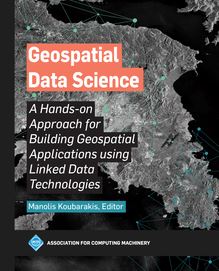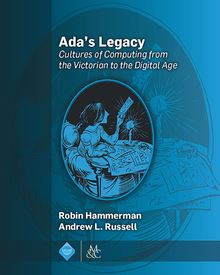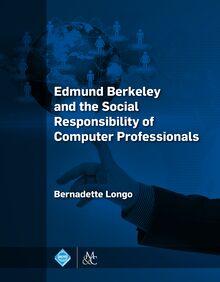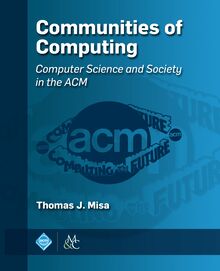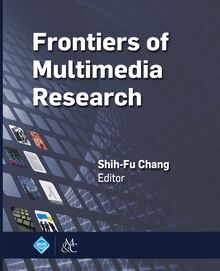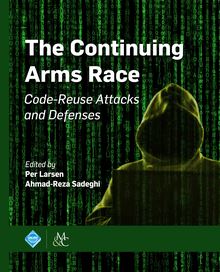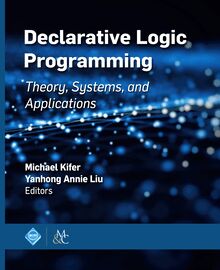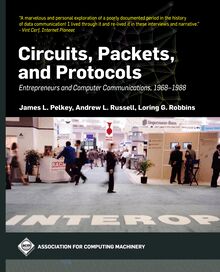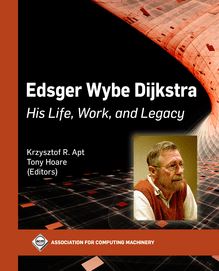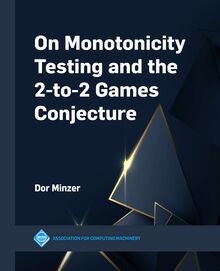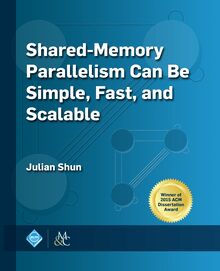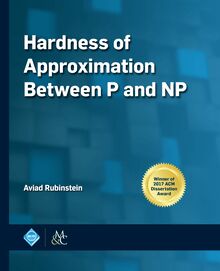-
 Univers
Univers
-
 Ebooks
Ebooks
-
 Livres audio
Livres audio
-
 Presse
Presse
-
 Podcasts
Podcasts
-
 BD
BD
-
 Documents
Documents
-
- Cours
- Révisions
- Ressources pédagogiques
- Sciences de l’éducation
- Manuels scolaires
- Langues
- Travaux de classe
- Annales de BEP
- Etudes supérieures
- Maternelle et primaire
- Fiches de lecture
- Orientation scolaire
- Méthodologie
- Corrigés de devoir
- Annales d’examens et concours
- Annales du bac
- Annales du brevet
- Rapports de stage
La lecture à portée de main
Vous pourrez modifier la taille du texte de cet ouvrage
Découvre YouScribe en t'inscrivant gratuitement
Je m'inscrisSemantic Web for the Working Ontologist , livre ebook
Découvre YouScribe en t'inscrivant gratuitement
Je m'inscrisEn savoir plus
Vous pourrez modifier la taille du texte de cet ouvrage
En savoir plus

Description
Enterprises have made amazing advances by taking advantage of data about their business to provide predictions and understanding of their customers, markets, and products. But as the world of business becomes more interconnected and global, enterprise data is no long a monolith; it is just a part of a vast web of data. Managing data on a world-wide scale is a key capability for any business today.
The Semantic Web treats data as a distributed resource on the scale of the World Wide Web, and incorporates features to address the challenges of massive data distribution as part of its basic design. The aim of the first two editions was to motivate the Semantic Web technology stack from end-to-end; to describe not only what the Semantic Web standards are and how they work, but also what their goals are and why they were designed as they are. It tells a coherent story from beginning to end of how the standards work to manage a world-wide distributed web of knowledge in a meaningful way.
The third edition builds on this foundation to bring Semantic Web practice to enterprise. Fabien Gandon joins Dean Allemang and Jim Hendler, bringing with him years of experience in global linked data, to open up the story to a modern view of global linked data. While the overall story is the same, the examples have been brought up to date and applied in a modern setting, where enterprise and global data come together as a living, linked network of data. Also included with the third edition, all of the data sets and queries are available online for study and experimentation at data.world/swwo.
- Preface
- What is the Semantic Web?
- Semantic modeling
- RDF—the basis of the Semantic Web
- Semantic Web application architecture
- Linked data
- Querying the Semantic Web—SPARQL
- Extending RDF: RDFS and SCHACL
- RDF Schema
- RDFS-Plus
- Using RDFS-Plus in the wild
- SKOS—managing vocabularies with RDFS-Plus
- Basic OWL
- Counting and sets in OWL
- Ontologies on the Web—putting it all together
- Good and bad modeling practices
- Expert modeling in OWL
- Conclusions and future work
- Bibliography
Sujets
Informations
| Publié par | Association for Computing Machinery and Morgan & Claypool Publishers |
| Date de parution | 03 août 2020 |
| Nombre de lectures | 0 |
| EAN13 | 9781450376167 |
| Langue | English |
| Poids de l'ouvrage | 40 Mo |
Informations légales : prix de location à la page 0,2400€. Cette information est donnée uniquement à titre indicatif conformément à la législation en vigueur.
Extrait
Semantic Web for the Working Ontologist
ACM Books
Editors in Chief
Sanjiva Prasad, Indian Institute of Technology (IIT) Delhi
Marta Kwiatkowksa, University of Oxford, UK
Charu Aggarwal, IBM Corporation, USA
ACM Books is a new series of high-quality books for the computer science community, published by ACM in collaboration with Morgan Claypool Publishers. ACM Books publications are widely distributed in both print and digital formats through booksellers and to libraries (and library consortia) and individual ACM members via the ACM Digital Library platform.
Computing and the National Science Foundation, 1950-2016: Building a Foundation for Modern Computing
Peter A. Freeman, Georgia Institute of Technology
W. Richards Adrion, University of Massachusetts Amherst
William Aspray, University of Colorado Boulder
2019
Providing Sound Foundations for Cryptography: On the work of Shafi Goldwasser and Silvio Micali
Oded Goldreich, Weizmann Institute of Science
2019
Concurrency: The Works of Leslie Lamport
Dahlia Malkhi, VMware Research and Calibra
2019
The Essentials of Modern Software Engineering: Free the Practices from the Method Prisons!
Ivar Jacobson, Ivar Jacobson International
Harold Bud Lawson, Lawson Konsult AB (deceased)
Pan-Wei Ng, DBS Singapore
Paul E. McMahon, PEM Systems
Michael Goedicke, Universit t Duisburg-Essen
2019
Data Cleaning
Ihab F. Ilyas, University of Waterloo
Xu Chu, Georgia Institute of Technology
2019
Conversational UX Design: A Practitioner s Guide to the Natural Conversation Framework
Robert J. Moore, IBM Research-Almaden
Raphael Arar, IBM Research-Almaden
2019
Heterogeneous Computing: Hardware and Software Perspectives
Mohamed Zahran, New York University
2019
Hardness of Approximation Between P and NP
Aviad Rubinstein, Stanford University
2019
The Handbook of Multimodal-Multisensor Interfaces, Volume 3: Language Processing, Software, Commercialization, and Emerging Directions
Editors: Sharon Oviatt, Monash University
Bj rn Schuller, Imperial College London and University of Augsburg
Philip R. Cohen, Monash University
Daniel Sonntag, German Research Center for Artificial Intelligence (DFKI)
Gerasimos Potamianos, University of Thessaly
Antonio Krug er, Saarland University and German Research Center for Artificial Intelligence (DFKI)
2019
Making Databases Work: The Pragmatic Wisdom of Michael Stonebraker
Editor: Michael L. Brodie, Massachusetts Institute of Technology
2018
The Handbook of Multimodal-Multisensor Interfaces, Volume 2: Signal Processing, Architectures, and Detection of Emotion and Cognition
Editors: Sharon Oviatt, Monash University
Bj rn Schuller, University of Augsburg and Imperial College London
Philip R. Cohen, Monash University
Daniel Sonntag, German Research Center for Artificial Intelligence (DFKI)
Gerasimos Potamianos, University of Thessaly
Antonio Krug er, Saarland University and German Research Center for Artificial Intelligence (DFKI)
2018
Declarative Logic Programming: Theory, Systems, and Applications
Editors: Michael Kifer, Stony Brook University
Yanhong Annie Liu, Stony Brook University
2018
The Sparse Fourier Transform: Theory and Practice
Haitham Hassanieh, University of Illinois at Urbana-Champaign
2018
The Continuing Arms Race: Code-Reuse Attacks and Defenses
Editors: Per Larsen, Immunant, Inc.
Ahmad-Reza Sadeghi, Technische Universit t Darmstadt
2018
Frontiers of Multimedia Research
Editor: Shih-Fu Chang, Columbia University
2018
Shared-Memory Parallelism Can Be Simple, Fast, and Scalable
Julian Shun, University of California, Berkeley
2017
Computational Prediction of Protein Complexes from Protein Interaction Networks
Sriganesh Srihari, The University of Queensland Institute for Molecular Bioscience
Chern Han Yong, Duke-National University of Singapore Medical School
Limsoon Wong, National University of Singapore
2017
The Handbook of Multimodal-Multisensor Interfaces, Volume 1: Foundations, User Modeling, and Common Modality Combinations
Editors: Sharon Oviatt, Incaa Designs
Bj rn Schuller, University of Passau and Imperial College London
Philip R. Cohen, Voicebox Technologies
Daniel Sonntag, German Research Center for Artificial Intelligence (DFKI)
Gerasimos Potamianos, University of Thessaly
Antonio Krug er, Saarland University and German Research Center for Artificial Intelligence (DFKI)
2017
Communities of Computing: Computer Science and Society in the ACM
Thomas J. Misa, Editor, University of Minnesota
2017
Text Data Management and Analysis: A Practical Introduction to Information Retrieval and Text Mining
ChengXiang Zhai, University of Illinois at Urbana-Champaign
Sean Massung, University of Illinois at Urbana-Champaign
2016
An Architecture for Fast and General Data Processing on Large Clusters
Matei Zaharia, Stanford University
2016
Reactive Internet Programming: State Chart XML in Action
Franck Barbier, University of Pau, France
2016
Verified Functional Programming in Agda
Aaron Stump, The University of Iowa
2016
The VR Book: Human-Centered Design for Virtual Reality
Jason Jerald, NextGen Interactions
2016
Ada s Legacy: Cultures of Computing from the Victorian to the Digital Age
Robin Hammerman, Stevens Institute of Technology
Andrew L. Russell, Stevens Institute of Technology
2016
Edmund Berkeley and the Social Responsibility of Computer Professionals
Bernadette Longo, New Jersey Institute of Technology
2015
Candidate Multilinear Maps
Sanjam Garg, University of California, Berkeley
2015
Smarter Than Their Machines: Oral Histories of Pioneers in Interactive Computing
John Cullinane, Northeastern University; Mossavar-Rahmani Center for Business and Government, John F. Kennedy School of Government, Harvard University
2015
A Framework for Scientific Discovery through Video Games
Seth Cooper, University of Washington
2014
Trust Extension as a Mechanism for Secure Code Execution on Commodity Computers
Bryan Jeffrey Parno, Microsoft Research
2014
Embracing Interference in Wireless Systems
Shyamnath Gollakota, University of Washington
2014
Code Nation: Personal Computing and the Learn to Program Movement in America
Michael J. Halvorson, Pacific Lutheran University
2020
Semantic Web for the Working Ontologist
Effective Modeling for Linked Data, RDFS, and OWL
Dean Allemang
Working Ontologist LLC
Jim Hendler
Rensselaer Polytechnic Institute
Fabien Gandon
INRIA
ACM Books 33
Copyright 2020 by Association for Computing Machinery
All rights reserved. No part of this publication may be reproduced, stored in a retrieval system, or transmitted in any form or by any means-electronic, mechanical, photocopy, recording, or any other except for brief quotations in printed reviews-without the prior permission of the publisher.
Designations used by companies to distinguish their products are often claimed as trademarks or registered trademarks. In all instances in which the Association of Computing Machinery is aware of a claim, the product names appear in initial capital or all capital letters. Readers, however, should contact the appropriate companies for more complete information regarding trademarks and registration.
Semantic Web for the Working Ontologist: Effective Modeling for Linked Data, RDFS and OWL Dean Allemang, Jim Hendler and Fabien Gandon
books.acm.org
http://books.acm.org
ISBN: 978-1-4503-7617-4 hardcover
ISBN: 978-1-4503-7614-3 paperback
ISBN: 978-1-4503-7616-7 EPUB
ISBN: 978-1-4503-7615-0 eBook
Series ISSN: 2374-6769 print 2374-6777 electronic
DOIs:
10.1145/3382097 Book
10.1145/3382097.3382098 Preface
10.1145/3382097.3382099 Chapter 1
10.1145/3382097.3382100 Chapter 2
10.1145/3382097.3382101 Chapter 3
10.1145/3382097.3382102 Chapter 4
10.1145/3382097.3382103 Chapter 5
10.1145/3382097.3382104 Chapter 6
10.1145/3382097.3382105 Chapter 7
10.1145/3382097.3382106 Chapter 8
10.1145/3382097.3382107 Chapter 9
10.1145/3382097.3382108 Chapter 10
10.1145/3382097.3382109 Chapter 11
10.1145/3382097.3382110 Chapter 12
10.1145/3382097.3382111 Chapter 13
10.1145/3382097.3382112 Chapter 14
10.1145/3382097.3382113 Chapter 15
10.1145/3382097.3382114 Chapter 16
10.1145/3382097.3382115 Chapter 17
10.1145/3382097.3382116 References/Index
A publication in the ACM Books series, 33
Editors in Chief: Sanjiva Prasad, Indian Institute of Technology (IIT) Delhi
Marta Kwiatkowksa, University of Oxford, UK
Charu Aggarwal, IBM Corporation, USA
This book was typeset in Arnhem Pro 10/14 and Flama using pdfT E X.
Third Edition
10 9 8 7 6 5 4 3 2 1
Contents
Preface
Chapter 1
What Is the Semantic Web?
1.1 What Is a Web?
1.2 Communicating with Data
1.3 Distributed Data
1.4 Summary
Chapter 2
Semantic Modeling
2.1 Modeling for Human Communication
2.2 Explanation and Prediction
2.3 Mediating Variability
2.4 Expressivity in Modeling
2.5 Summary
Chapter 3
RDF-The Basis of the Semantic Web
3.1 Distributing Data Across the Web
3.2 Merging Data from Multiple Sources
3.3 Namespaces, URIs, and Identity
3.4 Identifiers in the RDF Namespace
3.5 CHALLENGES: RDF and Tabular Data
3.6 Higher-Order Relationships
3.7 Naming RDF Graphs
3.8 Alternatives for Serialization
3.9 Blank Nodes
3.10 Summary
Chapter 4
Semantic Web Application Architecture
4.1 RDF Parser/Serializer
4.2 RDF Store
4.3 Application Code
4.4 Data Federation
4.5 Summary
Chapter 5
Linked Data
5.1 Weaving a Web of Data
5.2 HTTP and the Architecture of the Web
5.3 Hash or Slash
5.4 See It for Yourself
5.5 Summary
Chapter 6
Querying the Semantic Web-SPARQL
6.1 Tell-and-Ask Systems
6.2 RDF as a Tell-and-Ask System
6.3 SPARQL-Query Language for RDF
6.4 CONSTRUCT Queries in SPARQL
6.5 Using Results of CONSTRUCT Queries
6.6 SPARQL Rules-Using SPARQL as a Rule Language
6.7 Transitive queries (SPARQL 1.1)
6.8 Advanced Features of SPARQL
6.9 Summary
Chapter 7
Exten
-
 Univers
Univers
-
 Ebooks
Ebooks
-
 Livres audio
Livres audio
-
 Presse
Presse
-
 Podcasts
Podcasts
-
 BD
BD
-
 Documents
Documents
-
Jeunesse
-
Littérature
-
Ressources professionnelles
-
Santé et bien-être
-
Savoirs
-
Education
-
Loisirs et hobbies
-
Art, musique et cinéma
-
Actualité et débat de société
-
Jeunesse
-
Littérature
-
Ressources professionnelles
-
Santé et bien-être
-
Savoirs
-
Education
-
Loisirs et hobbies
-
Art, musique et cinéma
-
Actualité et débat de société
-
Actualités
-
Lifestyle
-
Presse jeunesse
-
Presse professionnelle
-
Pratique
-
Presse sportive
-
Presse internationale
-
Culture & Médias
-
Action et Aventures
-
Science-fiction et Fantasy
-
Société
-
Jeunesse
-
Littérature
-
Ressources professionnelles
-
Santé et bien-être
-
Savoirs
-
Education
-
Loisirs et hobbies
-
Art, musique et cinéma
-
Actualité et débat de société
- Cours
- Révisions
- Ressources pédagogiques
- Sciences de l’éducation
- Manuels scolaires
- Langues
- Travaux de classe
- Annales de BEP
- Etudes supérieures
- Maternelle et primaire
- Fiches de lecture
- Orientation scolaire
- Méthodologie
- Corrigés de devoir
- Annales d’examens et concours
- Annales du bac
- Annales du brevet
- Rapports de stage
